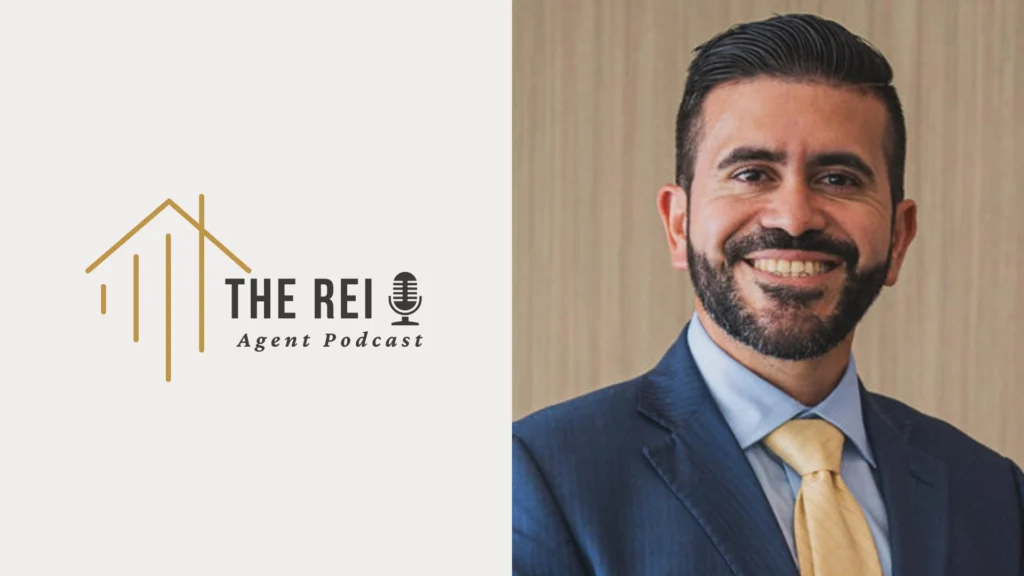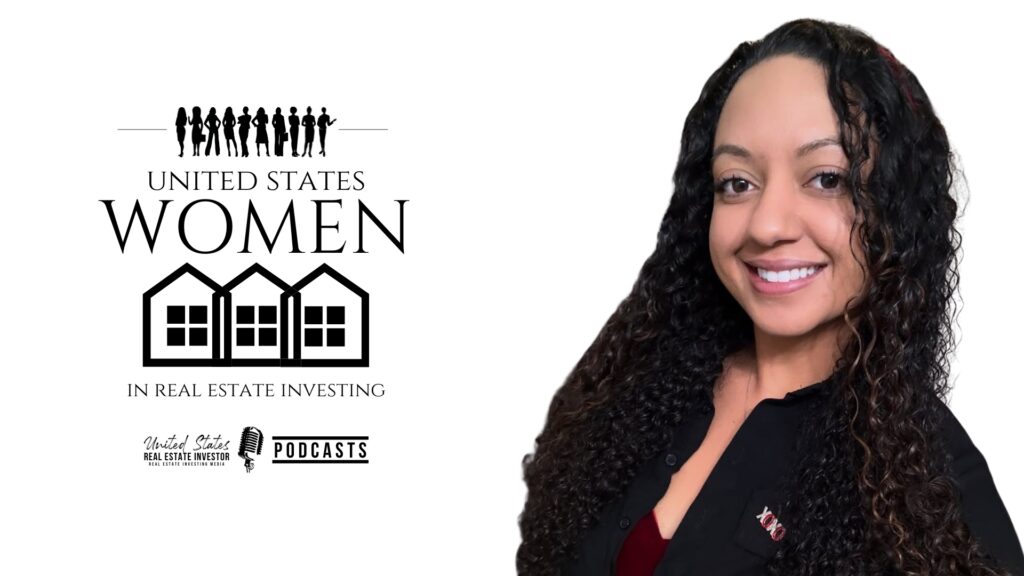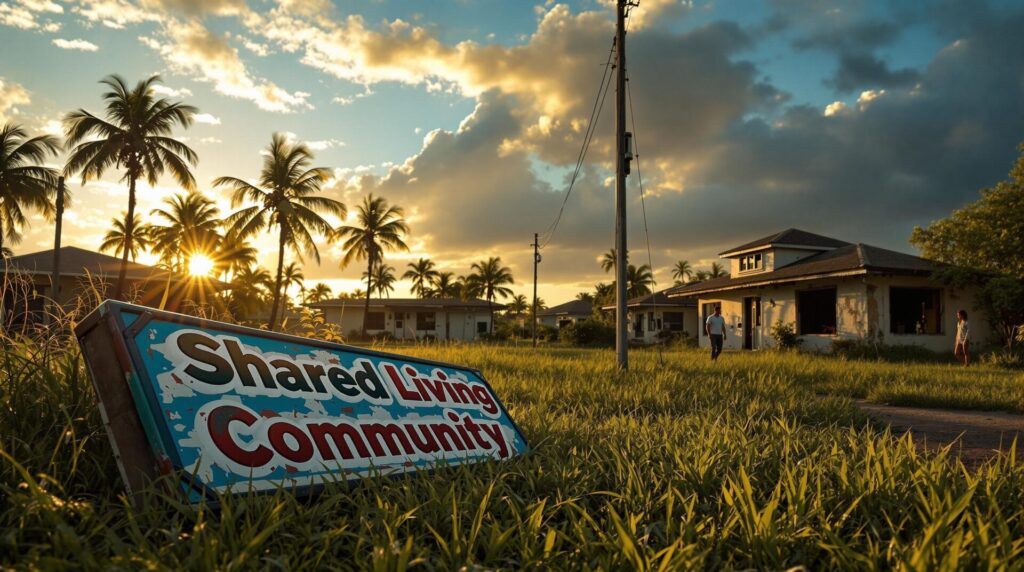Key Takeaways
- Innovate for Impact: Mike Kaeding’s revolutionary approach to cutting construction costs is paving the way for more affordable housing nationwide.
- Hire the Best: Building a strong team with top talent is key to sustainable growth and success.
- Balance Wealth and Wellness: True success lies in finding harmony between professional ambition and personal well-being.
The WELLthy Investor with Mike Kaeding
Follow and subscribe to The WELLthy Investor on social
Balancing Wealth and Wellness with Mike Kaeding
In this inspiring episode of The WELLthy Investor, hosts Mattias and Erica dive deep into the intersection of wealth and wellness, featuring the remarkable story of Mike Kaeding, a real estate developer who’s redefining success.
From overcoming personal and professional challenges to innovating in the world of affordable housing, Mike’s journey is a testament to the power of resilience, vision, and holistic living.
Power of Purpose: From Family Business to Industry Leader
“How do I want to spend the minutes I have here on earth?”
Mike Kaeding’s journey began with a question many of us face: how can we make a meaningful impact while staying true to ourselves?
Born into a family business, Mike wrestled with the idea of joining the company, fearing that others would think his success was handed to him. But when his father suddenly passed away, Mike found himself thrust into leadership.
Instead of shrinking from the challenge, he leaned into his purpose—transforming the small family business into a pioneering force in affordable housing.
Overcoming Tragedy: Turning Loss into Legacy
The loss of his father was a turning point.
It would have been easy to step back, but Mike chose to honor his father’s legacy by doubling down on his commitment to the company. “I didn’t take the title of CEO for five years because I didn’t feel like I had earned it yet,” he reflects.
This humility and dedication have fueled his relentless pursuit of innovation in the real estate sector.
Revolutionizing Real Estate: Innovating for Affordability
One of Mike’s most significant contributions has been his approach to solving the affordable housing crisis.
While many view rent control as a solution, Mike sees the need to address the root problem: the high cost of construction.
By adopting techniques from manufacturing, like cross-training and streamlining processes, his company has slashed construction costs by 20-30%.
“Imagine what that means—someday your rent or mortgage payment could be half,” he says, painting a picture of a future where housing is accessible to all.
Magic of Hiring the Best
At the heart of Mike’s success is his philosophy on hiring. He believes in attracting top talent by offering not just competitive salaries, but also a work environment where people genuinely want to be.
“If you feel you can’t afford to hire the best, you can’t afford not to,” he insists.
This approach has led to a culture of excellence, where employees are passionate about their work and committed to the company’s vision.
Balancing Ambition with Family Life
Despite his professional success, Mike is acutely aware of the importance of balance.
Early in his career, the demands of the business often kept him away from his family.
But as his children grew, Mike realized that he needed to be present not just as a CEO, but as a father. “Even though I haven’t lived it, I understand the principle that by giving them more time today, that builds that deeper bond and relationship,” he shares.
RELATED CONTENT
This intentionality now guides his approach to both work and family life.
Freedom to Choose: Prioritizing What Matters Most
For Mike, the freedom to spend time with his family is a core part of his definition of success.
Whether it’s taking a month off to travel the world or simply being home by six every evening to tuck his daughters into bed, Mike is committed to living a life that prioritizes what truly matters.
His story is a powerful reminder that wealth without wellness is empty—true success lies in finding harmony between the two.
Final Thoughts: Redefining Success in Today’s World
Mike Kaeding’s story is more than just a tale of business success; it’s an inspiring blueprint for anyone seeking to balance ambition with well-being.
In a world that often glorifies the hustle, Mike’s journey reminds us that there’s more to life than just accumulating wealth.
It’s about making a positive impact, building deep relationships, and living with purpose.
Stay tuned to The WELLthy Investor for more episodes that inspire you to achieve both wealth and wellness.
Contact Mike Kaeding
Transcript
Mattias (00:03): This is The WELLthy Investor Show, where we don’t just talk about your wealth, we also talk about your holistic health.
I’m your host, Mattias.
Erica (00:10): And I’m Erica.
Mattias (00:11): And this is The WELLthy Investor.
Welcome back to The WELLthy Investor.
Today we have a great guest.
We probably have a really long intro today because we just got back from Switzerland.
Family trip, like 36 hours ago.
Maybe it won’t be long because we’re really tired.
Erica (00:32): We’re full swing into jet lag right now.
Mattias (00:36): Yeah, it’s been a bit rough with the kids.
You took the brunt of that the past couple nights.
Erica (00:42): Yeah, last night was, I don’t know, maybe the worst of the two.
It’s debatable, but Azra was up at two and didn’t really go back to sleep after that.
And then Ayla was up at four.
They both thought they were ready for breakfast at four.
And then Sawyer was up at five.
And I think my whoops that I slept until about three.
They were just wide awake.
Azra woke up because she had a bad dream but couldn’t go back to sleep.
But yeah, they’re all out of whack.
They don’t know when to sleep. They don’t know when to eat.
Mattias (01:20): It’s, yeah, it’s rough. And the travel itself, lots of hard moments.
We had breakdowns. We had all sorts of things happen with the kids.
Of course, it’s a lot harder to travel with kids.
But at the end of the day, there were the memories.
So my mom is from Switzerland. She grew up there in a farm.
It was her father’s farm that he, we actually got to tour that building because my cousin’s living in it now.
It’s fairly small. It’s a three, four-ish bedroom house.
And we were figuring out how many people were crammed in there for my mom because it was my grandparents, so my mom’s mom and dad.
I think his mom lived there for a while. My great uncle, so my grandfather’s brother, lived there his whole life.
He never left, even after my grandfather died and my grandma and him just lived together, separate rooms.
But he stayed there for his whole life in a very small room.
And then there was 10 children.
Erica (02:32): That’s 14 people.
Mattias (02:35): Yeah, and it was, I mean, the house is maybe, I mean, like 1,200 square feet.
Erica (02:45): Yeah, well, and don’t forget, the ceilings are eight foot.
Mattias (02:48): Very short.
Erica (02:49): I’m 5’4”, and I felt like I was close to the ceiling.
Mattias (02:54): Yeah, so in Switzerland farms, they have a house part and then they have the barn attached to it, typically.
And so the cows will be on one end of the house and the living quarters will be on the other end of the house.
And usually in the middle is kind of where you feed the cows and where you might put hay up in the attic to feed the cows in the winter.
So growing up, we stayed in that farm as well.
So we went every summer. My parents made that a priority just to kind of stay connected with my mom’s family.
Again, 10 siblings.
So I grew up on a farm in Switzerland for like as a second home, basically.
And so it was really, really meaningful because we stayed on a farm, a different farm in Switzerland to see my kids experience the kind of stuff that I grew up with in my second home.
So like the cow bells, the cows go out every evening to eat in the fields overnight where it’s cool and they come into the barn to stay cool in the heat of the day.
So every evening around six or so, the cows went out with their cow bells and you got to hear it.
And a couple of times we got to help kind of move them to the field.
Erica (04:12): We walked the cows out to the field.
Mattias (04:14): And then every morning they came back.
That was around 5:30, 5:45. And in Europe, there’s no air conditioning.
They don’t believe in it.
And so the windows were open.
And so we would hear these cow bells.
Like, I mean, kind of all night you hear the cow bells a little bit.
It’s like this distant kind of nice ambient sound.
Erica (04:34): Yeah, it’s very enchanting from a distance.
Mattias (04:36): Yeah, and then they kind of at some point get louder and louder and louder because this house, the cows had to walk around where we were staying to get to the barn.
So they got really loud outside of our window, which for the most part didn’t wake the kids.
It happened a couple of times.
Erica (04:52): Well, the kids were, when they did wake up, they were excited to go to the window, look down, see the cows walking right past the window to go around the corner to get to the barn.
Mattias (05:04): And yeah, so it was just really cool to have the kids experience this.
We got to see some beautiful mountains.
And I mean, honestly, like it’s just, it’s hard.
I think so many things that we put our kids through are so hard, be so much easier just to stay home and be in a normal routine.
The trip to see the eclipse is another example.
But I just think that we’re really passionate about providing our kids experiences and it’s important to us.
Would you agree?
Erica (05:33): Yeah, yeah, absolutely.
I mean, this was their first chance to go to a place that is very much home for you.
And I’ve heard you talk about Switzerland before.
I’ve gone to Switzerland with you once, but it was two years after we were married.
We didn’t have kids.
And going back this time just hit different because I wondered, and you did say this later, but I wondered if coming back with your children and talking about these things that meant so much to you out loud kind of brought back so much more of how much this was a part of you and your home and your identity and your family.
And I could tell that it felt like coming home for you.
Mattias (06:21): Yeah, it was a really, it was a great trip.
It was, we had a family reunion. There was 105 people there.
Erica (06:30): It was 114.
Mattias (06:32): 114.
Erica (06:32): Yeah, there’s a lot of people. And this was just aunts, uncles, cousins, and their first cousins and their kids.
Mattias (06:40): Yeah, yeah.
Erica (06:42): And in Switzerland, it’s customary when you come and you greet every single person individually.
And when you leave, you say goodbye to each person individually. And so at one point we had decided that we were gonna head out and we were looking at this mass of people and like, where do we begin?
And how do we make sure we get everybody?
And we started going down the rows. Every single person, it took us a solid hour.
Mattias (07:07): Well, they had also said that the past few family reunions weren’t as big. A lot of people wanted to come see us.
And this was like kind of their opportunity because also usually when you go to Switzerland, a lot of people wanna invite you to their house or to do something with you, which was probably really hard because we were also staying with my brother and sister, my sister and brother-in-law and their kids.
So like trying to invite that many people over would be really hard to their house.
So like this was the opportunity for them to talk to us.
And everything in me wanted to just be like, boop, boop, boop, boop, bye, and just sneak out the back.
But yeah, we spent about an hour saying goodbye to everybody.
Erica (07:48): I mean, it is cool. Like if you think about going to a gathering here in the States, or even like a family gathering, you could go into a reunion and only talk to the couple of people that you feel comfortable and you already know. And this cultural like greeting and farewell, it makes you form connections with every single person.
And I can really appreciate that. It does make it impossible to have a quick goodbye, but it does really make you connect with everybody.
Mattias (08:22): Probably have to get used to that. The purpose of the trip was in part because my mom turned 70. So she got to have her 70th birthday there.
My dad actually had a birthday as well.
And so we got to just kind of do special things with them on their birthdays, which was really meaningful because we grew up going to Switzerland with them as a family.
And this is the first time we’ve been together again in Switzerland since high school, me and
my sister and my parents.
I went once after. So now with the grandkids and everything along, it was a meaningful trip. Hard, but meaningful.
Erica (09:00): This was not the purpose of the trip, but I did think it was cool that my family originated from the same area that your family did within 30 minutes of each other.
Mattias (09:14): Do you think there’s enough time gone by that we’re safe? We’re not related? I checked the genealogy.
Erica (09:25): All good. Also too late.
Mattias, that ship has sailed. Three kids.
Erica (09:32): Yeah, yeah. I think it’s a good example.
You’re right. Like we had talked about the eclipse of doing something, knowing that it’s going to be hard, but doing it because we believe in the reason why we’re doing it.
Mattias (09:49): Yeah.
Erica (09:50): 100% would go back and do it all over again.
Mattias (09:53): Yeah, and I think it’s easy, it’s safe to not do things like that, but I think the hard things are often the most valuable, which reminds me that we were really thankful to get back too, so we could get into kind of our normal routines.
We got to go to the gym today and it felt really good to move again. Honestly, I had more aches in my body.
I might be sore muscle-wise, but I feel a lot better having, well, maybe it’s because we did a cold plunge after the gym.
That might help with those aches and stuff as well, but it just felt really good to get back into those things. And I had a closing this morning, listed two houses today, had a podcast now.
It just feels good to kind of get back into the productivity thing after being gone for so long.
Erica (10:42): Yeah, well, the first thing that we did the morning after we got back was move some firewood, which I had joked about that because one of the things that I loved about Switzerland is how neat their firewood stacks are.
Every single one looks manicured. It’s amazing.
And his cousin even brought a bag, like a brown paper bag of kindling and firewood to a river where we were gonna hang out and make a fire. Every single piece of kindling was cut the exact length or the width of that paper bag, and it was all laid really nicely in stacks.
Mattias (11:17): Even the portable firewood stacked nicely.
Erica (11:20): So we got back and we realized we needed to move some firewood, and that was the first thing that we did. And I’m excited to make my little manicured firewood stack.
Mattias (11:28): Yeah, we got that project to go.
But yeah, no, it was awesome.
Getting into our guest a little bit, Jim, my Jim, Mike.
We are still jet lagged guys, I’m sorry. Mike Kaeding, Kading?
Erica (11:48): Yeah, Mike Kaeding.
Mattias (11:50): Is a real estate developer out of Minneapolis, the Twin City area. And man, that was a good conversation. He has gone through all sorts of things from, they develop apartments and keep them, but he has systemized the construction process.
He has to do property management, his team does. There’s a lot of different things that he does, and it’s a really good conversation. So definitely excited about that one to release.
Erica (12:30): Yeah, it was fun to hear him talk about where he came from, not wanting to take on the family business by any means, falling into it and then turning it into something of his own and continuing to evolve as needed, even in the last year, coming up with new ideas and never feeling like the work is finished, but always looking for what the next thing is. And he’s, yeah, he was fun to talk to.
Mattias (12:59): Seems like it’s really mastered a lot of those different categories and hiring really good people seems to be key to a lot of his success. I think that’s what he would say, but ummm…
Erica (13:10): Yeah, he had really good tips.
Mattias (13:12): Yeah, so anyway, without further ado, Mike Kaeding.
Mattias (13:19): Welcome back to The WELLthy Investor.
We are here with Mike Kaeding.
I said that right?
Mike Kaeding (13:25): Yes, you did.
Mattias (13:26): Great, you’re out of Minnesota, correct?
Mike Kaeding (13:29): Yes, the frozen tundra of the North.
Mattias (13:33): And where exactly in Minnesota? Are you in Minneapolis or?
Mike Kaeding (13:37): Yeah, in the Twin Cities here. That’s where most of our business is at.
Mattias (13:41): It’s a beautiful area.
Erica’s parents were there for a little bit and we actually went in winter and enjoyed it. That’s one of the few cities, I think, that we really felt that we could live in.
It’s an active area.
Mike Kaeding (13:58): Wow, you know, the coldest I’ve ever experienced here is I was biking across the Mississippi River wearing a face mask and my breath from my lungs kind of brushed up against my eye and my eyelid actually froze shut during the bike ride.
Erica (14:15): What?
Mike Kaeding (14:15): So, yeah, it can get quite cold.
Erica (14:19): That’s incredible.
Mike Kaeding (14:20): That’s amazing. They lived in Minneapolis. And how did they describe it?
Is it like a park within a city? Or they kind of developed it so it feels like a lake or a park is accessible within minutes no matter where you are. But I remember we went there for Christmas and we were, I think we were sitting in a coffee shop and it was negative three degrees and there was a marathon going on.
People were just out running. The weather does not stop them.
Mike Kaeding (14:51): Oh yeah, you know, I run outside through the entire year. And honestly, the hot days I like running much less than on the very coldest days because you can bundle up, it’s not a big deal. When you get up to 90 degrees, it’s really a struggle to run that temperature.
Erica (15:07): Yes, that’s what it is here. Today it’s 94 I think is the high and humid. Very, very hot.
Mattias (15:13): It’s been a heat wave here.
Mattias (15:16): Yeah, well, you are a real estate developer and you have a really interesting story about how that came to be. Would you mind telling us that story?
Mike Kaeding (15:26): Yeah, so we build and manage apartments and the way it came to be is my parents originally started the business. In fact, it was very small growing up. In fact, we lost everything.
My dad was even kidnapped in Peru.
Mattias (15:43): What?
Mike Kaeding (15:43): Yeah, crazy side story.
But we built that back up. And while growing up, I was on site, right? Picking up nails, sweeping up floors, doing whatever needed to be done.
Eventually I went off to college.
And the one thing that I knew when I went off to college was that I wanted nothing to do with the family business. And the reason that was deep down is that I didn’t want people to think it was given to me.
So I really wrestled with my own ego quite a bit. But what I realized about myself is that I wanted to try to make some kind of meaningful, positive impact in the world.
And I realized if I could take my parents’ small business and grow it to a scale that could have that kind of impact, then I could achieve that long-term goal.
It didn’t really matter where my ego was. As long as I made that goal, that’s what mattered to me. So I jumped in full time.
And I guess to take a quick step back, our dream as a company is ultimately to solve housing affordability. And we do that through driving down the cost of construction. We’ve been achieving about a 20 to 30% reduction in those construction costs.
And we believe that someday we can get to a 50% reduction.
But imagine what that means. That means someday your rent or your mortgage payment could be half.
And that’s our dream. So I jumped in. My dad and I doubled the size of the company within the few years working together.
And then one day, totally unexpectedly, my dad passed away. So one day I was working with my dad.
And the very next, I was running this small company.
In fact, I didn’t take the title of CEO for like five years because I didn’t feel like I had earned it yet. And there were so many challenging moments through that.
But eventually we made it past that and we have grown very substantially since then.
Mattias (17:44): There’s a lot to unpack there.
And that’s, I mean, that’s
such a, yeah, that’s had to be a hard transition in many ways. Transitioning into the CEO, one of them, but obviously losing father that you were working closely with.
I mean, that’s, yeah, that’s gotta be very powerful.
I wanted to ask a little bit if we can get into it. I know that, do the Twin Cities have rent control?
Mike Kaeding (18:12): At the time, no.
Today, St. Paul has a degree of rent control and Minneapolis has explored it, but generally not.
Mattias (18:24): We’re getting into making affordability.
And recently Biden announced that there was gonna be rent control, proposed rent control for across the nation. And I know many people have the opinion that this kind of stifles growth and stifles or incentivizes landlords to maximize the rent increases each time because if they don’t, they will lose that opportunity since it’s not based on the market, it’s based on you can only go up 5% or whatever it is.
Do you have any thoughts on that with your goal of causing or creating affordable housing?
Mike Kaeding (19:03): Yeah, for sure.
Rent control lowers rent for some, but ultimately reduces the availability of housing for others.
And so it doesn’t really solve the fundamental problems.
Other approaches that have been tried is taking money from some part of the economy through taxes and then giving that as capital that could be used to produce new buildings.
And then you put kind of rent controls on those buildings as a result, it’s called affordable housing.
That doesn’t really work either because the scale of the problem is so massive and you can’t take that amount of capital from the rest of the economy into housing.
So really I think the only way to actually solve housing affordability is to drive down the cost of producing more housing, right?
So that’s been our focus.
And then to those kind of astute listeners, they might look at me and say, well, Mike, great, you’re reducing the cost of construction that doesn’t lower rent.
And you’re right, in fact, it doesn’t in the short term.
But our long-term dream is to lower down that cost of construction, use those profits to build the system that builds housing.
You know, Elon Musk talks about how it’s hard to produce a car, but it is 10 to 100 to 1,000 times harder to build the system that builds that car.
And that’s what we’re looking to do.
And as we scale up that system, because over the next decade, we want to reach about 60,000 units per year.
As you scale up that system, you start producing so many units in a given market that the abundance of supply starts bringing prices down naturally.
And here’s the key and why it’s so different than rent control.
It solves affordability, not just for our own residents, it solves it for everyone in the market that we’re in, because it’s a fluid market driving down prices for everyone.
That’s how you get to have abundant supply at an affordable rate.
It’s happened in so many other sectors of our economy.
If people think they can just legislate a lower rent, it just doesn’t fundamentally work.
Mattias (21:29): If you’re a developer that could find better profits in a different sector, different type of development, and they don’t see the affordability or somebody that wants to go and rehab an apartment building, they don’t see the, you know, if the rents on a rundown apartment are so bad or so low under market value because the place is in such bad condition, there’s no incentive for a developer to come in and make those apartments nicer. So that doesn’t work mathematically.
So I agree with you completely.
I’m on a board, been president of the board now my second time because somebody dropped out. But anyway, we’ve been trying to tackle affordability and we’ve been in communications with our small town about this.
It’s obviously a huge problem throughout the whole country for the most part.
And it really boils down to supply. And I think that when we met with the city and we met with a bunch of different people that had interests in housing affordability, the people on the development side were saying, look, we need to make it easier on the developers.
We need to cut all the, you know, the corners, not the corners, so that, we need to streamline the process with this county and with the city to make it cheaper, to make it easier for development because ultimately it’s the supply.
Like you said, that ultimately it’s the supply that is gonna cause affordability to happen. And without, with it, if there’s just not enough houses for people and they’re competing to get into them, naturally prices are gonna rise.
So yeah, that’s great insight.
Mike Kaeding (23:05): You’re speaking my language.
I mean, for us to build a new building on a particular site, it might be multiple millions of dollars just in fees. And some of those fees make complete sense, like having to connect up sewer and water and things of that nature.
But frankly, there’s a large set of fees that cities just tack on because they think developers are where the money is at. And so it has no real tangible value to the property or, you know, it’s just excess funds for the city.
Mattias (23:37): And a lot of that money too, sorry if you don’t mind me interrupting quick, a lot of that money too is just to explore if the project’s feasible, right? Like you could invest tens of thousands of dollars just to see if the property, if it’s gonna work out. And a lot of it’s because of the, you know, getting approval and everything with the city.
Mike Kaeding (23:55): Well, our latest project, we have not even paid city fees yet and we’ve spent about $2.5 million.
Mattias (24:01): Wow.
Mike Kaeding (24:02): Haven’t paid fees, haven’t broken ground.
Mattias (24:05): That’s pretty normal because you gotta go through all the different engineering, architecture approvals and all that.
And so ultimately that project could still not happen? Are you still in a study period or are you past the study period at this point?
Mike Kaeding (24:16): That project can happen. We have city council approval, but that gets to my other point is you can go through, we had a project where we got approval, like the city staff loved it, they wanted it. We went and then got in front of the planning commission.
They loved it, they approved it. They passed it on to city council and there was a city council member who just didn’t want more apartments in the city. They shut it down after it was like four or five months of work and planning and plans and everything had come together and we had a purchase agreement, like everything had to happen to make that a reality.
They just shut it down and really nothing we could do until the next election.
Mattias (24:55): And then how much do you remember did you lose? How much had you invested in that project at that point, roughly?
Mike Kaeding (25:02): Yeah, that one was hundreds of thousands of dollars.
Mattias (25:06): See, that’s what people don’t understand is it’s so hard to get to that point. Like it’s not a small game to invest hundreds of thousands of dollars on a chance. Somebody having a bad day voting, I don’t know, maybe they saw an ugly apartment building on the way into the meeting and they were like, no more of that.
It’s crazy.
So let me thank you for what you’re doing. I mean, affordability is such a big problem and I’m glad that’s a motive, that’s a really admirable motive.
Mike Kaeding (25:37): Yeah, yeah, thanks.
Erica (25:39): I’d like to hear a little bit of what you found to lower some of the construction costs and what your process was behind that, just building that system.
Mike Kaeding (25:48): Yeah, so if you look at other industries like manufacturing, they’ve improved labor productivity by 760% over the past 60 years.
Awesome, in some ways we’ve come to expect that.
But in the world of construction, that same time period, we’ve done nothing.
We improved it by like 10%, terrible over 60 years.
And so at a very simple level, we’re taking the lessons learned from those other industries and applying it to our own.
To give you some sense of this, the first thing we did was we brought all of the work under one roof.
In the world of construction, your electrician is a different company, your plumbers are a different company, your HVAC is a different company.
If a construction company were to produce a car, you’d have a different company installing the windshield, a different company installing the door, and a different company installing the wheel.
And then of course, the wheel company, they would call you up and say, hey, I’m so sorry, I got delayed on another project and I can’t get out there for two weeks.
So your line would be shut down.
So in the world of manufacturing, they look at us and say, you’re crazy.
And we respond back to them with, this is the way it’s always been done, which is a terrible response.
So once you bring all the work under one roof, now we can apply some revolutionary techniques like the assembly line.
I know, revolutionary, right? But how in the world can
you take a building and drive it down a line?
You can’t, it’s just too big, we’ve looked into it.
But what you can do is you can take the person and move them through the building.
So right now, our teams or our entire project is broken into about 100 different tasks.
And there’s a different team assigned to each task.
And then every five hours, those teams shift through the building by one unit.
So if you look at the end of our building, every five hours, we have a brand new apartment unit completed.
And the other end of the building, it’s just dirt, they haven’t even done foundations yet.
And that one technique might take a building that takes 15 months and drives it down to nine.
Mattias (28:08): Wow, that’s amazing.
That makes a lot of sense too, because I’m sure there’s a lot of problems dealing with different groups, including the delays, right? But also just like they will start learning how to better set up the next person for success, et cetera, if they’re repeatedly doing it.
Mike Kaeding (28:26): Oh, for sure.
You get better at the task, but you can also apply other techniques for manufacturing, like cross-training, right? You can have your teams learn the tasks of the team ahead and the tasks from the team behind.
So that way, if there is a shakeup or kind of a ripple going through that schedule, people can step in and help the different areas ahead and behind them. Another huge thing is if it’s all one team, boy, they work together so much better than if it’s separate companies coming at different times that you don’t know.
It’s just so easy to blame the other trades, the other people for their work.
I was talking to our team yesterday and a few of them pulled me aside and said, here, I can’t blame someone else because I know my neighbor and what he’s doing.
And instead, I just go connect with them and figure out what went wrong and we fix the problem together. It’s a much better working environment.
Mattias (29:14): That’s amazing.
Erica (29:15): Oh, for sure. It seems like too, it would be so important to have solid working teams, employees who are invested. I’m curious what your hiring process is like and how you can get some people that can be a part of that for a long time and be happy there too.
Mike Kaeding (29:34): That’s the number one issue that we identified a number of years ago.
And so there’s so many pieces of the puzzle.
The big one is you have to build the right culture.
You need a place that people actually want to come work for. And part of that’s just paying top of market salaries.
We believe in hiring the very best.
And when I say the best, I truly mean the very best.
One of our staff members in 2007, Steve Jobs announced the iPhone.
Steve Jobs walked off that stage.
This is the brand new iPhone. Steve Jobs walked off that stage and our employee walked on that same stage following Steve Jobs’ announcement.
See, when you bring that caliber of people together, they change things.
They unlock doors for you that you didn’t know could be unlocked.
And what many business leaders at this point look at me and say, Mike, that sounds expensive.
And it is.
If you look at it as a cost per person, it’s very expensive because you have to pay them top of market salaries.
We give Google-like benefits.
I mean, we literally look at Google and copy their benefits and give it to our employees, including unlimited paid time off for hourly frontline construction workers.
But what you realize, though, is instead of looking at it as a cost per person, look at it as a cost per unit produced.
And once you do that, you realize it’s way less expensive.
So for those who feel they can’t afford to hire the best, my response simply is you can’t afford not to.
But even with all of that, there’s a whole hiring process we could talk about you have to put in place.
But we have been able to achieve a 0.4% acceptance rate into our company.
That is like substantially better than the average in the world of construction.
And when you go onsite and interact with the staff members, you can feel it. I was just talking with the team yesterday and a couple of different team members pulled me aside and said, Mike, I’ve never worked with a group like this before.
And they said, I know people look at our company and they say the value is in the buildings.
It isn’t.
The value is in the people that you’ve collected together to build these buildings.
Erica (31:53): That’s cool. I mean, that really speaks to the culture that you’ve created, too, that they feel that way. It’s more of a sense of community, it sounds like, than a workplace.
Mike Kaeding (32:02): Oh, yeah, for sure.
Mattias (32:04): You must have a really large team. I mean, so I’m thinking through some of the logistics here. I mean, you’ve got people in the planning, the development.
You’ve got the onsite construction people. You’ve got property managers, I’m assuming, right?
I mean, you’ve got, I mean, there’s just a lot of, a lot of, yeah, you’ve got a pretty big team.
Mike Kaeding (32:21): Yeah, we have about 200 employees.
I mean, we have international staff as well because we source materials all across the world.
We’ve got a facility that just handles logistics and materials coming in.
So we have to kit them and get them into small batches for delivery onsite.
We’ve got literally every trade, plumbing, electrical, HVAC, concrete, wall panel.
We even have precast concrete.
We’ve got a facility that builds these giant beams and columns that you typically see in giant buildings that then get delivered onsite.
So we brought all of that work and all of that capacity in-house.
Erica (32:58): Wow, and to come from, I think what I read in your profile bio, when you first started with your dad, I think you had said the company had crashed at one point and you really had to build it up back from the ground.
Mike Kaeding (33:11): Oh, yeah.
Erica (33:12): Can you, what would your dad think if he saw the company now?
Mike Kaeding (33:21): Yeah, I don’t think he would really understand the, I don’t think he would have ever predicted it would get to the point that it’s gotten to today.
I think he’d be really proud of it and kind of astonished of what we’ve accomplished and where we’re heading.
I think there’s a part of him, if I’m really honest, that would probably say, is it worth all of this work and energy?
Do you wanna just take a step back and relax a little bit?
But I think he’d be proud of it.
Mattias (33:52): That’s powerful.
Yeah, wow. And I mean, what a, you’ve done, you’ve created it to be your own now, right?
I mean, this is, you’ve really taken it to the next level. Funding-wise, do you all do, private capital is, how do you approach that?
Mike Kaeding (34:11): So here’s the magic.
Because our costs are so low, right, 20 to 30% less, we can do our projects with virtually zero equity involved.
Because a bank loan will typically fund about 75% of a project.
Well, if our costs are 75%, look, those things match up.
So our historical IRRs, not exaggerating, are basically infinite.
Incredible.
And now there’s more to that puzzle.
There’s HVCRE rules, there’s things that you have to do and mechanics you have to put in place to make that happen.
And there’s disclosures we have to give to the bank to kind of describe everything that we’re doing.
But assuming the bank is involved and on board with it, it all works, it’s magical.
Now, the last year or so, there was a change in the capital markets, right?
Interest rates went up and loan proceeds went down.
Before, banks were giving us about 75%.
Like overnight, it switched and it became 55%.
You know, we’re good, but we’re not that good.
I wish we were.
So we had a war chest of capital set aside and that’s what we used for a while.
But it forced us to kind of rethink things.
And I think this is the magic of having such a strong team is, yeah, we didn’t know the world of capital raising, we had to learn it.
And when we did things a little bit differently.
So first, we launched a Reg A, if you’re familiar with that.
It’s a way that anyone can invest into our investments.
And so it’s a retail-like product.
We actually built out, it feels like an online bank.
You can go in, make an investment, you can lock it up between six months and five years and earn a fixed rate of return that is much higher than you can possibly get at a bank.
And then we manage all of the risk behind the scenes, investing into our real estate assets and we match durations and all of that stuff behind the scenes.
So that’s a retail product that we launched.
That took us a year to get off the ground.
And then
that’s really grown quite a bit. It’s been a really neat platform.
So that’s on the retail side.
We said, okay, that was fun. We know what it’s like raising money from everyday people.
Let’s switch over now and explore what is it like raising money from billionaires?
So just polar opposite.
We ended up launching an international fund, which was really interesting.
Holy moly, did I learn a lot through that process.
And that, I mean, we’re literally on the phone with people who are billionaires.
I don’t actually get to talk to the billionaire.
It’s usually the handler for the billionaire who’s managing the money we’re talking to.
But for those investments, there’s a minimum investment size of $5 million.
And so it’s a very different kind of animal.
And so now we’ve also been toying about exploring in that middle ground as well.
But it’s been fun going through that journey.
Mattias (37:18): Yeah, that’s really interesting.
So I am not familiar with the reggae you said, right? That does not need to be accredited investors, it sounds like, right?
So the middle ground would be that accredited investor territory, which obviously the billionaires would be as well, where somebody could maybe have a minimum investment of like $100,000. But it sounds like the reggae is like, do you have a minimum investment? Is it like $100?
Mike Kaeding (37:40): There is no legal minimum.
We put it at $2,500 just because of the cost of transferring money. But we have investors there that earn three, four, $500,000 all day long.
Mattias (37:52): Yeah, well, with good returns like that, it makes sense.
Mike Kaeding (37:55): Oh, yeah, it’s a really fantastic place to put your money that’s, there’s still risk involved, read all the disclosures, but it’s designed to minimize the risk involved.
Mattias (38:07): Yeah, now in that format, would there be any kind of tax incentives or anything like that for the investor? Would there be depreciation, that kind of thing as well? Or is that just purely on the interest?
Mike Kaeding (38:19): No, there’s no depreciation that flows through anything like that.
It’s technically a promissory note.
So it’s kind of like a debt that you hold with the company.
Mattias (38:30): Okay, okay, that makes sense.
And I’m guessing the forced depreciation isn’t as grand on a new build, or I don’t know.
Mike Kaeding (38:39): Well, you can do some things like cost segregation studies.
So there’s some advantages there, everyone done right?
Mattias (38:45): Yeah, okay.
Well, what’s, I mean, you have probably a substantial portfolio.
How many do you have under management right now?
Mike Kaeding (38:54): It’s about 1000 apartment units, about $200 million of assets.
Mattias (38:58): Nice, yeah.
And so that’s, obviously you’ve had to master the side that’s management of, property management and everything.
So do you have any tips and strategies for that? Do you have a whole team? What’s that team look like?
Yeah, anything you can share about that?
Mike Kaeding (39:16): Hire the best and your life gets easy. It’s honestly the best answer.
I mean, early on, I was very involved.
We did a number of experiments, like we looked to see if we could kind of automate the whole process so people could rent their apartments and stuff online, and then they could just use like a key card to actually just enter their apartment once they’re ready to go.
And we use like international staff to kind of man the phones and all of that.
But that was too far, because it lacked providing great customer experience and service to our residents.
We learned that that touchpoint was really important.
So we kind of swung back the other way. We have a little bit more of a balanced approach today.
But for me, I went through, I really struggled to find the right leader.
Probably went through five different people who led all of the property management side and eventually we found someone amazing.
She runs half the company now.
She’s the CEO and also manages all the property management.
She is one of the most sought after property management executives in our area of the country.
Some of the top firms are actively reaching out to her, trying to get her to come over to their team and watching her.
So I was fiddling around. I was like a novice, frankly.
Watching her take over and just transform all of that and make it a magical experience, it’s amazing.
It’s so much fun to see what she’s executed on and really delivering great results.
But at the end of the day, it just hires someone great and just comes together.
Mattias (40:54): So one of the books on my list is Who Not How.
And you’re getting me excited, you’re getting me pumped up.
I want to jump through a wall right now and read that book and implement it.
Because we’re in the process of trying to systemize and bring on people and stuff.
So that’s really awesome to hear.
Erica (41:14): Yeah, I’m curious if you have any tips for us as we’re smaller starting out, we haven’t had a full-time employee yet.
We’re kind of on the cusp of hiring and we’re trying to figure out how do you make that? It feels like a big step to us.
And so we’re trying to figure out how do you do that? You have somebody’s livelihood now in your hands that you’re responsible for and you don’t want to let them down.
Is the company ready for it? We’re just having some of those conversations.
I don’t know if you remember back when the company was that small or even before it happened. But curious if you have any words of wisdom for us.
Mike Kaeding (41:53): Yeah, a few different thoughts.
Well, I mean, one simple thought is make sure it’s something you want to do.
Because it does bring stress, it does bring pain.
You’re dealing with human beings and it’s not always pretty, it’s not always great.
Honestly, there have been moments that the team is phenomenal now, but before, I just wondered, is it worth it? Is it worth all this work?
I could scale back, I have a smaller business.
Yeah, it’s maybe less grand, but I can live a great life on a decent income on a smaller-sized business.
But for me, I made the decision it is worth it.
And it’s a very rewarding experience if you’re willing to put up with the pain and stress of it.
Then what I would say is know that you’re gonna fail at it.
Sarah Blakely, the CEO who built a billion-dollar company, she said once, and I really liked it, even after she got good at hiring, she still failed 50% of the time.
So don’t fret that you’re gonna fail because you are gonna fail.
The important thing is to recognize as quickly as possible that you’ve hired the wrong person and then to choose to let them go.
We employ something from Netflix called the Keeper Test.
And this is a question we ask ourselves regularly.
And that is, if a particular employee were to quit, how hard would you fight to change their mind?
If the answer is you fight tooth and nail to keep them, great, they’re the right person.
Anything shy of that, if you’re hemming and hawing, wondering if you have the right person, you do not have the right person.
You know you have the right person because you’re gonna say, there is no way I ever want to lose this person.
And so you should only have people at that kind of passion and caliber.
And it took me a while to really internalize that.
But now that I have seen what amazing teams truly look like, truly amazing teams, it becomes a drug.
You want nothing less than that for every team in your organization.
A few other tips.
One is be really clear about what the values, the purpose, the mission of your organization is.
It’s okay if it’s not normal, if it’s something off the wall.
Maybe for you it’s all about making money. That’s not actually a bad thing.
The most important thing is that you’re honest about who you are.
You spell those things out.
And then employees, through the hiring process, make the decision on themselves if you are the right kind of company for them.
Because you want people that can be aligned to whatever mission, purpose, and values that you have.
Then I’d recommend two levels of interviews.
We do both a values-based interview and we do a skills-based interview.
Because you need to make sure the person you’re hiring fits both of those.
Then on top of that, we do a trial period.
This doesn’t fit for all employees, but for a lot of them it has.
Where they’ll come work for us for two weeks.
They’ll be paid, they’ll work with the team that they’re being hired with.
And at the end of those two weeks, their coworkers make the decision whether or not they’re actually permanently hired on.
And when you start building a really great team, those coworkers, they don’t want to work with B or C or D level players.
They only want to work with A level players and so they’ll be really picky about who comes onto their team.
There’s even more I could go into, but
if you can master that well, you’ll be very successful in your business.
Erica (45:45): Yeah, those are really good tips.
Mattias (45:47): That’s incredible.
Obviously, curating the perfect team is something that you’re passionate about.
What brings you the most energy?
And I mean, you are involved with tons of things. What brings you the most energy in your work?
Mike Kaeding (46:02): That’s a great question.
I think for me, it’s solving interesting problems.
At different stages of our companies, this has been different issues.
And so early on, it was very much in the weeds, side by side, kind of solving issues.
Once I started realizing that the teams weren’t strong enough, there was a moment that I was screwing that up really.
In fact, some of my mentors came beside me and said, Mike, you’re not doing this right.
And so we made those changes. And then as soon as we had strong teams, that freed up a ton of my time.
So now I can work on different kinds of problems, like exploring new things that we could bring or add into the company to kind of improve the construction costs.
We’ve even looked into things like, can we start our own bank?
And by starting our own bank, then we could actually be delivering the capital we need in our projects more efficiently.
Erica (46:58): Bringing that under your roof too, huh?
Mike Kaeding (47:01): Yeah, exactly.
So yeah, to me, at the end of the day, I think I just enjoy solving problems.
Mattias (47:09): Yeah, there’s a creative side to that, that you can probably get into like a deep flow, really working through, love it.
And you’re obviously a very driven person. And you have a family.
I saw some cute pictures. Could you tell us about your family?
Mike Kaeding (47:27): Yeah, I got an amazing wife who is sincerely like the nicest person I’ve ever met.
She is way better than I deserve. And yeah, she’s amazing.
And then I have got two daughters, a four-year-old and a six-year-old. The six-year-old is spunky.
She is energetic. She is driven and there’s good pros and cons to that.
And then my younger one, my four-year-old is just very loving, caring.
If you say like something a little bit negative to her, like, oh, maybe you shouldn’t be eating that.
She’ll like get to a point of like almost in tears. Shoot, am I doing something wrong?
But super cute and fun as well.
Mattias (48:14): How do you balance your family life with obviously the, I mean, obviously you would have some high work demands. You could work a lot if you wanted to.
Mike Kaeding (48:23): Oh yeah. I mean, early on, honestly, it was not well.
And that’s why I talk about my wife being better than I deserve.
There were, honestly, there were weeks that I would get 200 hours a week.
And that’s, I mean, you’re not sleeping fully at night at that point.
And there are certainly moments of building and scaling up a company that sometimes require like insane amounts of energy.
But there’s a degree of which I just enjoyed it too, which made it tough.
But as I grew older, I realized that wasn’t the right approach.
And especially when my daughter started getting to that three, four, five, six-year-old, those are my favorite ages.
And there was like a time in my life where I started to realize that I didn’t want to miss that or lose that.
Even right now, things have been on the busier side because of the capital markets.
And we have been wanting and dreaming, my wife sent me another text about it this morning, about taking like a month or two off and just traveling the world with the kids for a little while, just for the fun of it.
But one of the ways that I’ve been balancing better in these tougher times is that I’ve been making it a point to do something like every weekend with the kids.
I know we can’t go on a month-long vacation right now, but last weekend I took them to tour the US Bank Stadium, where the Vikings play, which was a lot of fun exploring through that.
We are going to Valley Fair soon, we’re gonna go to the Mall of, we went to the Mall of America, we’ll be going to, actually this weekend we’ll probably just, like my older daughter wants to learn how to like video edit, so we’ll do some video editing together, but like just being very intentional about spending that time with them.
And then for me to every day when I come home, I’m always home by six and I always put the kids to bed, and we always have this like half an hour of just like talk time, just questions and hanging out and goofing off that I do every day.
Erica (50:30): Yeah, that is, I’m always curious, I mean, you were talking about the systems, I was thinking about this question then too, but also with this intentionality you’re talking about with your family, was there a certain period of time where it wasn’t so balanced or it kind of brought it to your attention that you wanted to make a change to make it more intentional?
Mike Kaeding (50:51): Yeah, I think there was a couple of moments, I mean, early on, my kids were really young or just recently born, we were actually developing on an ISP, so this is the internet service provider for all of our residents, so that when residents moved in they’d have to sign up for the internet, it automatically was working, came into the revenue stream for our company, and I have a degree in computer science and I was helping out that team execute on that, and we were just struggling to get it to execute, we had a deadline for when residents were moving in, so it was a kind of traumatic event from the business side.
At the same time, my daughter’s being born, or recently born, and my wife felt like I wasn’t there, and the honest truth was I wasn’t, nearly to the level that I should be at least, and that was really kind of a moment for me of realizing I gotta fix something, something is not working here, I gotta fix it, and then sort of the second wave that hit me was as my kids started getting older, and they really entered my favorite ages, like in that three, four, five, and seeing that, I didn’t wanna miss that, because I knew by the time they’re eight, nine, 10, 12, like they’re not gonna wanna hang out with dad anymore, and now they wanna spend every minute, like waking a minute with me, and I need to take advantage of this while it’s here, and I also, even though I haven’t lived it, I understand the principle that by giving them more time today, that builds that deeper bond and relationship, so that when they are 12, 13, 14, I’ll have that foundation to work from, that if I don’t spend that time today, I’m just gonna struggle when they’re older.
Erica (52:40): Mm-hmm.
Mattias (52:41): Yeah.
Erica (52:42): Oh, we can, I should say I can really identify with that, because we, I feel like it’s a, when you have the choice to work as, I mean, you could work all day, every day, if you wanted to, Mattias has more of that option with the real estate investing. I think for us, it’s been a constant recalibration of where is the balance with us and our family, and is it teetering on one side or the other, do we need to change things or make things more intentional, or have we been able to touch base this week, or that’s been something that we’ve been working on constantly, it’s not something that you can ever lose your sight on. You always have to be attentive to it, or it can really slide one way or the other.
Mattias (53:30): Ongoing assessment and intentionality, I mean, it’s really what you have to do, because you can get caught up, I mean, I can get caught up in work too, and I’ve said this before in the podcast, but we’re a couple of years away from my daughter being halfway through her time in our house, and that’s like a crazy another thing to think about, and definitely wanting to soak up as much time as we can with them. There’s a power in understanding that there’s finite, you know, your life is finite, your time with people, that it could be the last time that they do something really cute, say something a certain way, and so just trying to keep yourself aware of that as you balance all the hecticness of life and go through all the goals you want career-wise and everything.
Mike Kaeding (54:23): Yeah, my dad died relatively young, and it really reminded me how short life really is, and I often ask myself the question, how do I wanna spend the minutes I have here on earth? And for me, that really comes in two parts. Part of it is that I wanna make some kind of meaningful, positive impact in the world, and I want this deep relationship with my wife and kids, and it’s a challenge to make all that happen, but kind of to your point, if you get that out of balance
, what are you gonna do with just piles of money?
Are they gonna shove $100 bills in your grave? What value does that really have? Money doesn’t mean a lot other than being a tool to achieve a greater end.
Mattias (55:11): Yeah.
Erica (55:14): You had talked about wanting to take that month-long trip somewhere with your family, and I guess that is kind of the other flip side to this. You can work as much as you want, and with the real estate investing, it also provides the opportunity to also take time off if you want to. You’re not necessarily tied to your job.
You are for other responsibilities, but maybe not necessarily for money, but you might have the freedom to be able to do that. We had just taken a two-and-a-half-week trip to Switzerland, just got back two days ago, and we’re able to do that just because we have the flexibility with our jobs to be able to spend that time with family, and to have our kids. We have a seven, four, and two-year-old, and to have our kids experience travel and a long airplane ride, and to see part of their cultural background, too, and some of the Swiss culture, and we stayed at his aunt’s farm, kind of in rural Switzerland, and the way those farmhouses are built, the barn is attached to the house in the same building, and so our two-year-old son, every morning, he would wake up, and he would want to go see the cows, and so you’d walk out the front door, and you’d just go into the next door beside it, and the cows were there eating their breakfast, and there were some baby calves, and there was actually a calf born on the farm while we were there, and so they got to see the calf brought in by the tractor, and hooked up with the other cows, and so it was just to be able to have that opportunity to take your family, and go travel, and spend time somewhere else, and experience the world as a bigger place is really valuable, too.
Mattias (56:56): I love that. I think it gives us our why.
I mean, I think the freedom is what we seek, and so giving experiences like that to our kids, I think, is really meaningful to us.
Mike, before we got on the call, you mentioned you run every Sunday. Is that purely a health thing? Does that help your brain?
What other things do you do to keep yourself going? Because I know that being there for your work, being there for your family doesn’t always rejuvenate yourself, so what do you need to kind of stay optimal?
Mike Kaeding (57:39): You mentioned the run, so I do a 15-mile run every Sunday. Rain, shine, snow, whatever the situation, I’m out there running.
Mattias (57:47): Negative 30 degrees.
Mike Kaeding (57:51): Yeah, and that does a few things for me.
One is just the physical exercise, which I think is important. That’s my longer cardio event throughout the week, and the other thing is it gives me a great opportunity to think.
Usually some of my best ideas and kind of bringing puzzle pieces together happen during that run, and I also get a chance to listen to books, and so I try to put on an audio book typically during that run as well.
Other things that are really important to me is I always go to bed on time at the same time every night because I learned early on in college that I was way more effective if I got my full rest than if I just tried to eke out a few more hours. I do intermittent fasting only once a day.
There was even, for like five years, I only ate six times a week, meaning I took a whole 48 hours off every single week. Then I think I do a lot of research in what are the best longevity things going on right now, like Dr. Sinclair is one of my favorite, David Sinclair, NMN, and Spiritual, and there’s some other things, and then yeah, I also do weight training throughout the week five times a week now, and then I do, during the day, I’ll often walk the halls, and so like three or four times a day, there’ll be a five to 10-minute walk just to get out and move, and usually I’m solving some kind of problem. You can actually tell how stressful my day was by the number of minutes I’m actually walking the halls because I’m solving problems in the hallways.
Mattias (59:29): It’s amazing the connection between your body and your mind, and I think that moving and all that can really clear your head, help you process, I feel the same way. I don’t wanna go down the rabbit hole of the David Sinclair thing, because that’s, we could talk about maybe later, but that’s really interesting. Definitely listen to that, and some Peter Ortega as well.
I’m sure you’re familiar with them. Super cool, and you mentioned books. Do you have a favorite book currently, or one that you would say is fundamental for you that you can recommend?
Mike Kaeding (1:00:03): Oh yeah, there’s so many books that have changed my life, but I would say if I had to pick one favorite, it’s No Rules Rules by Reed Hastings.
He is the founder of Netflix, and this is really where I understood the concept of hiring the best people at a really deep level.
He changed the game, and it changed my world entirely.
Mattias (1:00:27): Okay, that sounds like one we need to get.
Erica (1:00:31): Add it to the list.
Mattias (1:00:32): I need some 15-mile runs.
Mike Kaeding (1:00:36): Yeah, before that book and changing our philosophy in hiring, we were growing at maybe 10 to 20% per year. After that, it was doubling or more every year.
Erica (1:00:48): Really? Wow. Did you tell him that? Did you send him a message, let him know?
Mike Kaeding (1:00:51): I should, I haven’t thought about doing that.
Erica (1:00:54): Yeah, he’d probably love to hear that.
Mattias (1:00:57): Too bad we don’t have him here to ring on.
Yeah, man, this has been fascinating. Honestly, I feel like we could talk for two hours and really get way more information.
I thank you for what you do. I mean, I think that you are making a big impact, and your motives for what you do are, I think, great, because again, the affordability crisis is huge. So what a great way to make an impact on the world.
Mike Kaeding (1:01:29): Hmm, well, thanks for having me. This has been a lot of fun.
Mattias (1:01:32): We will, I’m sure, stay in touch. And oh yeah, where would people be able to reach out to you if they had any questions or wanted to invest in the billionaire fund? We’ve got at least six billionaire listeners, so you might want your personal cell phone number.
Mike Kaeding (1:01:49): Yeah, you can visit our website, norhart.com. That’s N-O-R-H-A-R-T.com.
And on there, if you just click on Invest, you can see the online investing platform, very simple and easy to use, and generates great rates of return for our investors.
And then yeah, if you happen to be that billionaire person, feel free to contact us directly via email or phone call, and we’ll be happy to be in touch.
Mattias (1:02:13): Yeah, awesome. Thanks so much for being here.
Mike Kaeding (1:02:15): Yeah, thanks for having me.
Mattias (1:02:18): Thanks for listening to The WELLthy Investor Podcast, where we talk about wealth and holistic health.
If you enjoy our content, subscribe wherever you get your podcasts to hear new episodes every Thursday.
If you really like our content, you can follow us on social media at The WELLthy Investor, wealthy spelled W-E-L-L-T-H-Y.
No related posts.





















